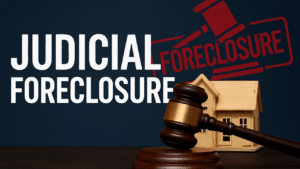 Judicial Foreclosure: A Court-Driven Process in Home Foreclosure
Judicial Foreclosure: A Court-Driven Process in Home Foreclosure
Judicial foreclosure is a legal process in which a lender seeks to recover the balance of a defaulted mortgage by filing a lawsuit against the borrower. Unlike non-judicial foreclosure, which bypasses the court system, judicial foreclosure involves a formal legal proceeding and is required in many states to ensure due process for homeowners.
What Is Judicial Foreclosure?
Judicial foreclosure is a type of foreclosure that takes place through the court system. It begins when the lender files a lawsuit against the borrower, alleging that the borrower has defaulted on their mortgage payments. The court oversees the process, ensuring that all parties have an opportunity to present their case. If the court rules in favor of the lender, it issues a judgment of foreclosure, allowing the property to be sold to satisfy the debt.
Why Does Judicial Foreclosure Happen?
Judicial foreclosure occurs when a borrower fails to meet their mortgage obligations, such as making timely payments. In states that require judicial foreclosure, lenders must follow this process to enforce their rights and recover the outstanding loan balance. The court’s involvement ensures that the foreclosure is conducted fairly and in compliance with state laws.
How Does Judicial Foreclosure Work?
The judicial foreclosure process typically involves the following steps:
- Filing a Lawsuit: The lender files a complaint in court, outlining the borrower’s default and requesting permission to foreclose on the property.
- Notification: The borrower is served with a summons and complaint, giving them an opportunity to respond or contest the foreclosure.
- Court Proceedings: Both parties present their arguments, and the court reviews the evidence. The borrower may raise defenses, such as errors in the loan documents or improper servicing.
- Judgment of Foreclosure: If the court rules in favor of the lender, it issues a judgment of foreclosure, authorizing the sale of the property.
- Foreclosure Sale: The property is sold at a public auction, often conducted by the sheriff or another court-appointed official. The proceeds are used to pay off the mortgage and other liens, with any surplus returned to the borrower.
Options for Borrowers
Borrowers facing judicial foreclosure have several options to address the situation:
- Cure the Default: Pay the overdue amount to bring the loan current and stop the foreclosure.
- Negotiate with the Lender: Explore alternatives such as loan modification, repayment plans, or short sales.
- File for Bankruptcy: In some cases, bankruptcy can temporarily halt foreclosure proceedings and provide time to reorganize finances.
- Defend Against the Lawsuit: Raise legal defenses to challenge the foreclosure in court.
Outcomes of Judicial Foreclosure
The outcomes depend on the borrower’s actions and the court’s ruling:
- Foreclosure Sale: If the borrower cannot resolve the default, the property is sold at auction.
- Deficiency Judgment: If the sale proceeds do not cover the full loan balance, the lender may seek a deficiency judgment for the remaining amount, depending on state laws.
- Redemption Period: In some states, borrowers have a redemption period after the sale to reclaim the property by paying the full amount owed.
Conclusion
Judicial foreclosure is a structured and court-supervised process that ensures fairness and compliance with legal standards. While it can be lengthy and complex, it provides borrowers with opportunities to address their default. And potentially avoid losing their home. Understanding the judicial foreclosure process and exploring available options can help homeowners navigate this challenging situation with greater confidence.